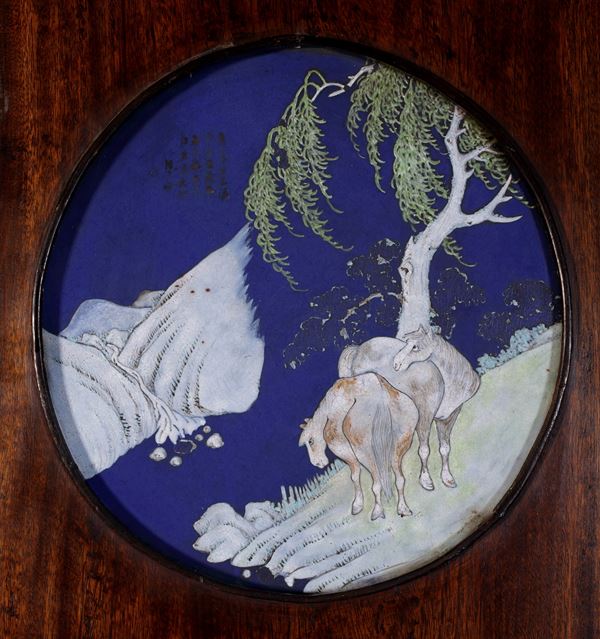AN EXTREMELY RARE PAIR OF WOODEN AND POWDER-BLUE PORCELAIN QIANJIANGCAI PANELS SIGNED BY WANG JUNSHUN, China, dated 1902
Beautifully painted on powder blue background, each panel consists of: a round plaque at the top (diameter 26.5 cm) depicting two rabbits and two horses in landscapes among trees and rocks, a fan-shaped plaque (maximum length 26.5 cm) depicting scholar's objects, flowers, and antiques (peku), a hexagonal plaque (length 26.5 cm) depicting flowers and birds, and a square plaque depicting landscapes with trees, mountains, and rivers. Each plaque bears gold inscriptions where the artist's signature Wang Junshun (汪俊顺作) and the cyclical date Ren Yin (壬寅), corresponding to the year 1902, are found.
Catalog notes:
Qianjiang literally means “pale umber” and originates from a genre of painting on paper that emerged during the Yuan dynasty (1279-1368) in China, catering to the literati class. Regarding porcelain, the term qianjiang refers to a style that developed in the late 19th century, probably during the reign of Emperor Tongzhi (1861-1875), and was adopted by many artists of the time, some of whom were even part of the Imperial Kilns. This style of porcelain decoration is closely linked to the landscape paintings on paper and silk by the master Huang Gongwang (1269-1354).
Wang Junshun was a renowned painter of the qianjiang style on porcelain during the late Qing dynasty. He was active from 1900 to 1905.
清光绪 汪俊顺浅绛彩人物花鸟山水博古纹 两条屏


























